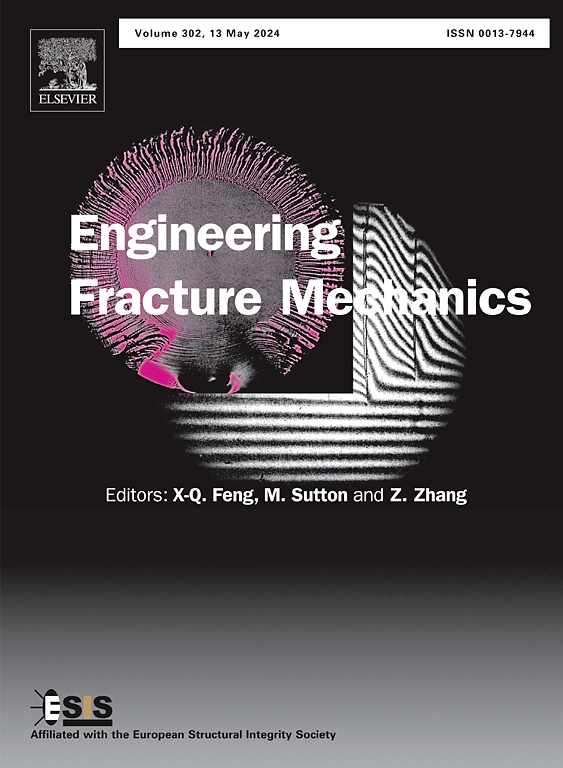孔隙弹性介质中动态脉冲断裂扩展的一致疲劳相场模型
IF 4.7
2区 工程技术
Q1 MECHANICS
引用次数: 0
摘要
提出了一种模拟循环流体载荷作用下孔隙弹性岩石裂缝扩展的热动力学一致的动态水力-力学耦合混合模疲劳相场模型。引入了一个疲劳退化函数,随着循环次数的增加和历史变量的积累,该函数显著降低了断裂韧性。损伤是由弹性应变能密度和流体能共同驱动的。该模型采用有限元框架内的Newmark积分法,采用Newton-Raphson迭代算法求解非线性方程组。通过动态剪切试验、单刃断裂疲劳试验、kristtianovic - geertsma -de Klerk模型和脉冲压裂试验等二维问题对模型进行了验证。在单断裂条件下,研究了临界能量释放速率、注入速率和注入方式对脉冲裂缝扩展的影响。此外,针对均质和层状储层中的三簇裂缝,研究了不同注入速率对裂缝扩展的影响。结果表明,该模型能准确预测复杂裂缝形态。本文章由计算机程序翻译,如有差异,请以英文原文为准。
A consistent fatigue phase-field model for dynamic pulsed fracture propagation in poroelastic media
This paper presents a thermodynamically consistent dynamic hydraulic-mechanical coupled mixed-mode fatigue phase-field model for simulating fracture propagation in poroelastic rocks under cyclic fluid load. A fatigue degradation function is introduced that significantly reduces fracture toughness as the number of cycles increases and history variables accumulate. Damage is driven by both elastic strain energy density and fluid energy. The model uses the Newmark integration method within a finite element framework and solves the nonlinear system of equations using the Newton-Raphson iterative algorithm. The model is validated through several two-dimensional problems, including a dynamic shear test, a single-edged fracture fatigue test, a Khristianovic-Geertsma-de Klerk model, and a pulse fracturing experiment. The effects of critical energy release rate, injection rate, and injection method on pulse fracture propagation are investigated under single-fracture conditions. Additionally, the effects of different injection rates on fracture propagation are examined for tri-cluster fractures in homogeneous and layered reservoirs. The results demonstrate that the model accurately predicts complex fracture morphology.
求助全文
通过发布文献求助,成功后即可免费获取论文全文。
去求助
来源期刊
CiteScore
8.70
自引率
13.00%
发文量
606
审稿时长
74 days
期刊介绍:
EFM covers a broad range of topics in fracture mechanics to be of interest and use to both researchers and practitioners. Contributions are welcome which address the fracture behavior of conventional engineering material systems as well as newly emerging material systems. Contributions on developments in the areas of mechanics and materials science strongly related to fracture mechanics are also welcome. Papers on fatigue are welcome if they treat the fatigue process using the methods of fracture mechanics.

 求助内容:
求助内容: 应助结果提醒方式:
应助结果提醒方式:


